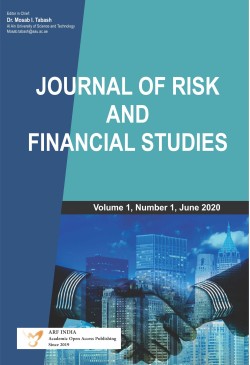The concept of Corporate Governance (CG) has become a contemporary focus in both accounting and finance arenas .This plays a vital role, especially in the process of assuring financial reporting quality (FRQ). The purpose of this paper is to investigate the relationship between selected CG characteristics and the level of FRQ in Sri Lanka. The study was carried out using secondary data obtained through published annual reports from 209 companies listed in the Colombo Stock Exchange (CSE) during 2017 to 2020 including 836 firm year observations. Six selected CG characteristics (Board Size, Board Independence, CEO Duality, Audit Committee Size, Audit Committee Independence, and Audit Committee Accounting Expertise) and the level of FRQ has been evaluated by
absolute value of discretionary accruals (ADA) using Panel linear regression analysis. It was found that, a significant positive relationship between the audit committee accounting expertise and FRQ, while a significant negative relationship was found between Board Size and FRQ. However the other remaining CG characteristics were not significantly influenced on the level of FRQ. Overall, this analysis highlights the importance of having a comparatively smaller board size and composition the members in the audit committee with financial and accounting background to enhance FRQ and transparency. The findings of this study expect to have a significant policy implication for policy makers and regulators in terms of formulating strategies and policies on CG best practices in Sri Lanka. Similarly, the entities should promote smaller board size and recruiting, especially majority of independent nonexecutive directors with sufficient accounting skills and financial experience with the aim of curtailing the adverse earnings management practices to improve FRQ.
Keywords: Corporate Governance, Absolute Value of Discretionary Accruals, Financial Reporting Quality, Colombo Stock Exchange Sri Lanka
JEL Classification: G34, G38
Amarasekara NT and Hewage YM (2022). Does Corporate Governance Impact on Financial Reporting Quality? Evidence from Listed Entities in Sri Lanka. Journal of Risk and Financial Studies, Vol. 3, No. 1, pp. 55-79. https://doi.org/10.47509 /JRFS.2022.v03i01.03
